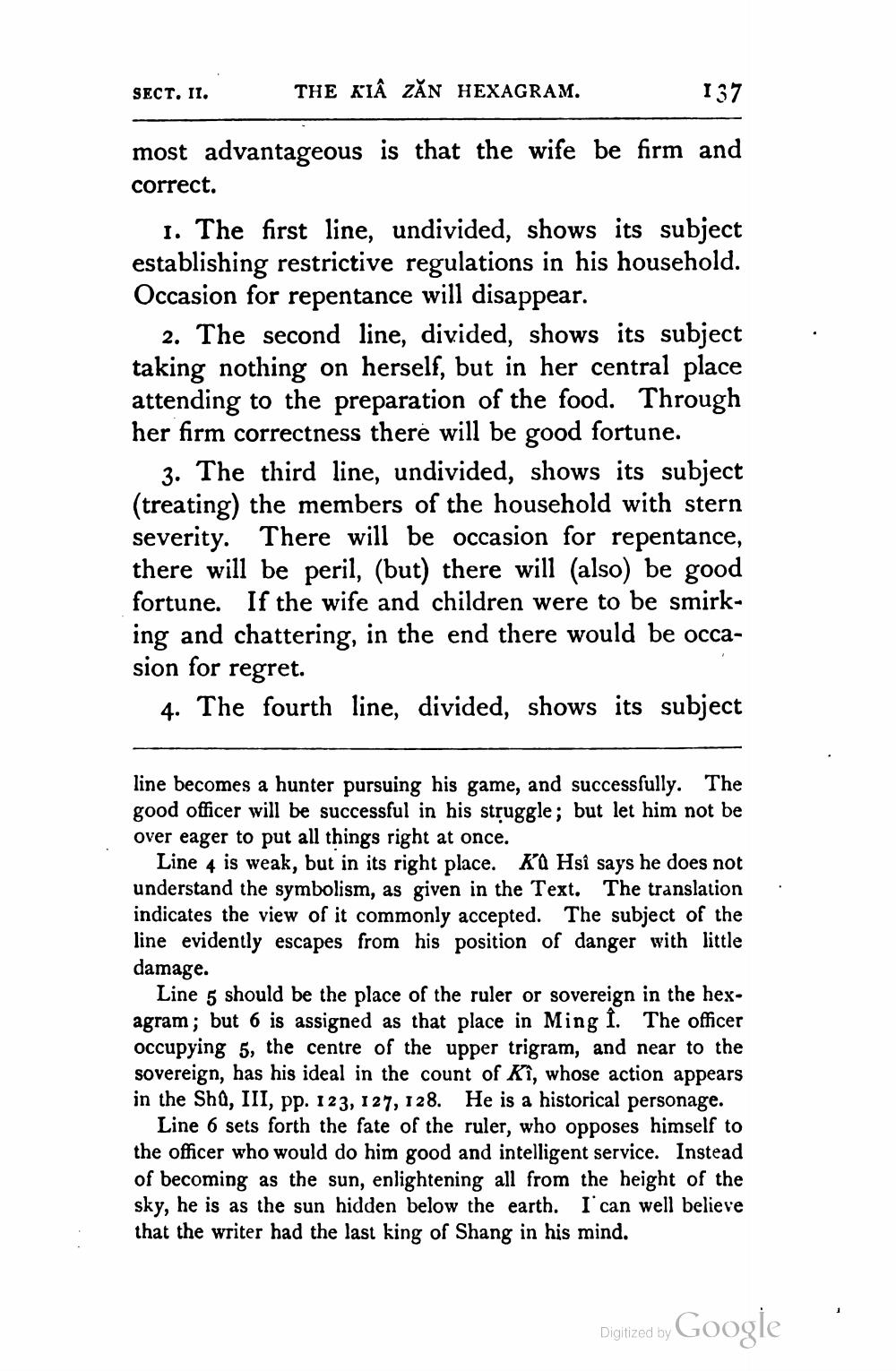________________
SECT. II.
THE KIÂ ZĂN HEXAGRAM.
137
most advantageous is that the wife be firm and correct.
1. The first line, undivided, shows its subject establishing restrictive regulations in his household. Occasion for repentance will disappear.
2. The second line, divided, shows its subject taking nothing on herself, but in her central place attending to the preparation of the food. Through her firm correctness there will be good fortune.
3. The third line, undivided, shows its subject (treating) the members of the household with stern severity. There will be occasion for repentance, there will be peril, (but) there will (also) be good fortune. If the wife and children were to be smirking and chattering, in the end there would be occasion for regret.
4. The fourth line, divided, shows its subject
line becomes a hunter pursuing his game, and successfully. The good officer will be successful in his struggle; but let him not be over eager to put all things right at once.
Line 4 is weak, but in its right place. K’Hsi says he does not understand the symbolism, as given in the Text. The translation indicates the view of it commonly accepted. The subject of the line evidently escapes from his position of danger with little damage.
Line 5 should be the place of the ruler or sovereign in the hexagram; but 6 is assigned as that place in Ming I. The officer occupying 5, the centre of the upper trigram, and near to the sovereign, has his ideal in the count of Ki, whose action appears in the Shů, III, pp. 123, 127, 128. He is a historical personage.
Line 6 sets forth the fate of the ruler, who opposes himself to the officer who would do him good and intelligent service. Instead of becoming as the sun, enlightening all from the height of the sky, he is as the sun hidden below the earth. I can well believe that the writer had the last king of Shang in his mind.
Digitized by Google




